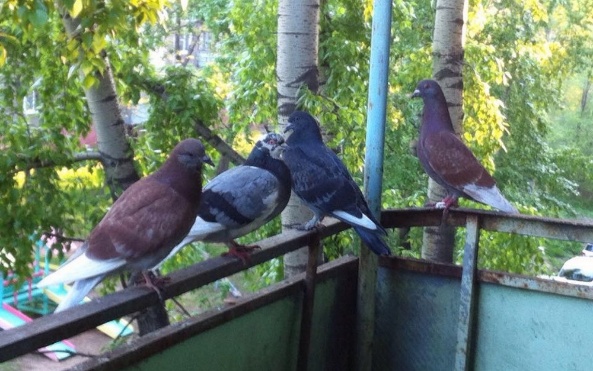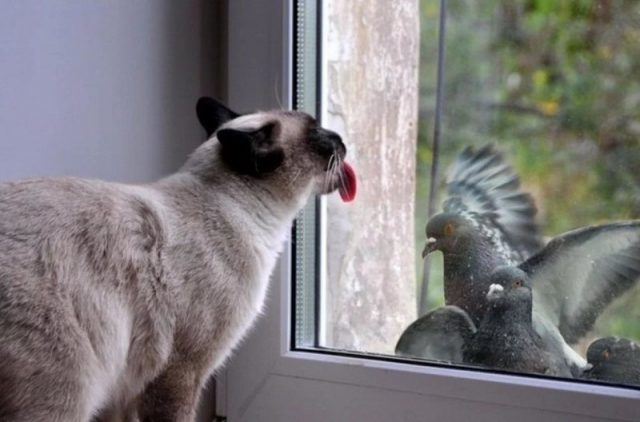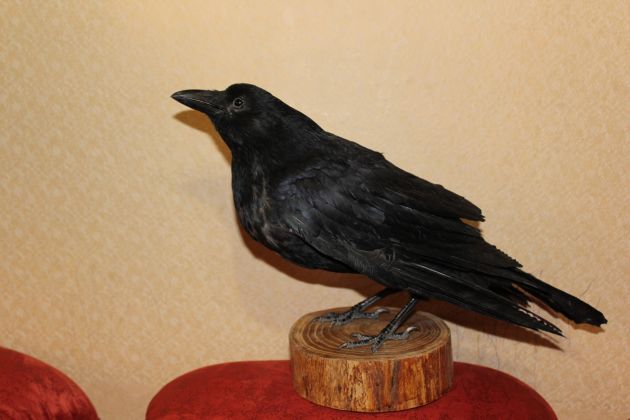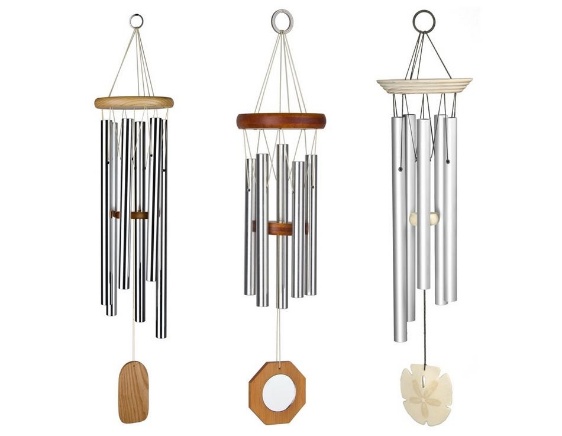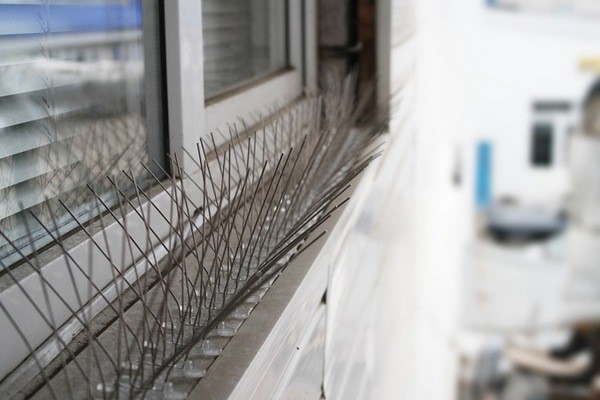Content
A serious problem in almost all cities in the world is large flocks of blue doves, which are difficult to get rid of. Initially, this synanthropic bird species nested in the rocks. After the emergence of cities, birds decided that houses with attics, balconies and protective sheds were not inferior to rocks, and in some ways even superior. Today it is almost impossible to get rid of pigeons who decide to change rocks to town houses. In the city, the pigeon has everything: places for nesting and dumps for obtaining food. But pigeons are dangerous neighbors, which are better to admire from a distance, and not on your own balcony.
Pigeon control methods
Rock pigeons were domesticated many millennia ago. Wild pigeons still live here and there in nature. Urban - the descendants of the second feral domestic pigeons. City birds differ from their ancestors only in a wide variety of colors and a complete lack of fear of humans. The latter has already become a problem for the people themselves.
Pigeons devoid of fear build nests on balconies, love to sit on balcony awnings. With the metabolic rate of birds, windows, balcony railings, drying clothes quickly become splattered with bird droppings.
But even this is not the worst thing. Pigeons, like all birds, carry diseases dangerous to humans:
- salmonellosis;
- listeriosis;
- psittacosis;
- tularemia;
- campylobacteriosis;
- toxoplasmosis;
- pseudotuberculosis;
- Newcastle disease;
- cryptococcosis.
Some of these diseases are caused not by viruses or bacteria, but by protozoan parasites. Infection with parasites occurs even without direct contact with pigeons. Bugs usually live in the nests of the birds on the balconies. Insects are called pigeons, birds or chickens, the essence does not change.
While there are owners in the nest, the bugs sit in the litter and feed on the blood of adult birds or chicks. But the pigeons grow up, the birds leave the nest, and the bug crawls into the apartment in search of food. If the pigeons have been infested with protozoa, the bugs will transmit the parasites to humans. Since bedbugs are cosmopolitan, they will happily settle in an apartment. The pigeon bug prefers birds with a high body temperature, as it finds prey by infrared radiation. In the absence of a bird within reach, the bug is able to feed on human blood. Those who dealt with these bloodsuckers know how difficult it is to get rid of bedbugs.
Against this background, the landing of pigeons on the windowsill in the early morning seems like a trifle. The cooing of the caring male and the clatter of claws on the windowsill only do not allow you to sleep.
You can try to get rid of the unpleasant neighborhood with the help of a bird repeller. A lot of scarers have already been invented. Pigeon scarers are:
- visual;
- sound;
- mechanical barriers;
- repellents, that is, repelling smell;
- lethal, as the last line of defense.
Of the lethal, the easiest to handle are poisons. They allow you to get rid of pigeons for a while. But using poisons is undesirable due to the fact that no one can predict where the pigeon will die. If the bird dies on the balcony visor or in a gap inaccessible to the owner of the apartment, several days of "enjoying" the cadaverous smell are provided not only to the residents of the apartment, but also to their neighbors. Disposing of birds using other lethal methods can be a violation of laws that protect animals from cruelty. Without consequences, only agents that repel birds can be used.
Visual aids
Theoretically, they should instill fear in pigeons by their very appearance. These tools include:
- reflective tapes;
- shiny metal rods freely suspended from the roof of the balcony;
- windmills with mirrors;
- helium-filled balloons with painted eyes;
- stuffed animals or models of birds of prey;
- cat.
The cat refers to visual means very indirectly. The first time, seeing her through the glass, the pigeons will be frightened. Then they will figure it out and stop being afraid. If the cat is a hunter, and from a visual means to a material one, there is a risk of losing the animal. Many cats fall from balconies trying to catch pigeons.
The effectiveness of light scarers
Light scarers are among the most effective after mechanical barriers. Birds are afraid of incomprehensible movement and sudden sun glare. Light scarers are sold in the form of reflective strips, a string of discs, or simply shiny polished rods. Even in a light wind, all these objects sway and release sunbeams.
Disadvantages:
- quickly become covered with dust;
- useless in cloudy or calm weather;
- can only be suspended from top to bottom.
The exceptions are tapes, which can be stretched horizontally at any height. Or cut into pieces and make an analogue of a curtain out of them. For a while, the pigeons will be afraid to sit on the balcony visor. But it will not be possible to completely get rid of the "upper" birds with the help of light scarers. Pigeons will quickly figure out that the frightening object is below and does not climb onto the roof.
A visual balloon scarer with eye patterns can help you get rid of pigeons on your roof better than light reflectors. Its effectiveness does not depend on the strength of the wind or the presence of the sun. But periodically faded balls will need to be replaced with new ones.
A windmill with mirrors glares in the sun and, when rotated, produces a sound that scares away pigeons. Combining light and sound function effectively helps to get rid of birds. But in calm weather, it is useless.
It is not worth spending money on stuffed animals and models of birds of prey, including the "raven". According to reviews of those who have tested this remedy, pigeons almost instantly recognize a fake. In addition, in nature, prey animals are not afraid of a well-fed predator. They are wary of the hunter and are excellent at reading body language. The stationary stuffed pigeons soon begin to be perceived as a decoration of the balcony.
Sound scarers
Used in airports to get rid of birds on the runway. But in the retail trade, there are no such powerful repellents. Household ultrasonic devices, which can be bought in stores, should theoretically scare away pigeons, and at the same time cats, dogs, rats and other animals. But buyers complain about the complete lack of effect from these devices.
Another version of the sound device is the once fashionable Chinese pendants. In the wind, these thin tubes make a melodic sound, more pleasant than the noise of a windmill. The disadvantage is that this sound is quite quiet, and it is unlikely that it will be possible to get rid of the birds on the balcony canopy. But they definitely won't sit on the railing.
Barriers
The mechanical method allows you to get rid of pigeons sitting on the windowsills and railing of the balcony, but such a palisade does not look very aesthetically pleasing. However, the advantages of barriers outweigh the disadvantages.
The barrier looks like plastic tape. On the one hand, it is covered with an adhesive, on the other, it is equipped with a palisade of plastic spikes. Stick it on horizontal surfaces. Sometimes you can find a modification of such a barrier attached with screws.
Before purchasing a barrier, you will need to measure the length of the surface to be protected.
The chemical version of the barrier repeats the old Russian way of protecting wooden fortresses in winter. Instead of water, window sills and railings are lubricated with compounds that make the horizontal surface very slippery. So you can get rid of all the pigeons that occupied the balcony. But the balcony visor is inconvenient to handle.
The manual indicates the duration of the composition and the required proportions.
Repellents
Pigeons are not bugs, but they can also get scared by the smell of spices. Birds may not like harsh odors. Guaranteed they won't like it if you sprinkle the spices directly into the nest. But getting rid of the guests on the railing will be more difficult. The main problem is that spices will not lie on narrow surfaces for a long time. They must be somehow "fixed". You can make a paste and apply to the railing.
After the rain, the balcony with "repellents" will look very dirty, and you will hardly be able to get rid of the birds.
How to make do-it-yourself bird scarers
Visual repellents for can be made from old LEDs. Their surface, from which information is read by a laser, shines almost as much as reflective tape. It is only necessary to take into account that laser discs are heavier than reflective tapes. When constructing garlands from discs, you do not need to overload one product. The discs should swing freely in the wind.
Of the sound scarers, 2 options are possible: a "tarahtelka" from a plastic 5-liter bottle or an analogue of a Chinese product made of forks and knives, as in the video:
A bottle repeller is more often used in summer cottages. You can also put it on the balcony. If the apartment is on the top floor, with the help of a bottle windmill there is a chance to get rid of the pigeons on the roof. If you burn out a "gear" on the neck and add a ratchet, the windmill will make a rather nasty crackle, scaring away birds. When using such a repeller, there are chances at the same time to get rid of neighbors.
There are several more options for hand-made mechanical barriers:
- the coarsest sandpaper;
- sealing holes where pigeons can nest;
- fishing line over the railing;
- adhesive tape traps.
It is better to glue sandpaper on little-used window sills. Hard emery is unpleasant for pigeons, but on the balcony railings such paper interferes with the owners themselves.
It is better to stretch the line above the balcony railing at a height of 3-5 cm from the surface. The fishing line will get rid of the pigeons, as the birds will not be able to land properly on the railing. For the owner of the balcony, the fishing line will interfere less than sandpaper.
You can get rid of a pigeon pair by systematically ruining their nest or filling up holes in which the birds decide to settle. The desire for small caves remained in urban pigeons from their wild relatives.
The adhesive tapes used for rodent protection will also keep birds away. But this method is closer to lethal. The glue is very viscous, it will remain on the paws of the released pigeon. As a result, the bird will stick somewhere else and die there from thirst and hunger. Although it will be possible to get rid of the pigeon in this way. For smaller birds, glue is deadly. The little bird will quickly be exhausted, fall into the glue and die.
Among the disadvantages of such glue, in addition to being fatal for birds, is rapid dusting when outdoors. Such a dust trap will quickly lose its properties.
Traps
The most famous and widespread are snares. Can be made from fishing line. But the device of the snare requires some skill. It should be remembered that in the snare the bird will either suffocate itself or remain alive until the owner of the balcony appears. In the latter case, the hunter will have to kill the pigeon himself.It is difficult to get rid of the flock in this way: only one individual is caught in the snare. The rest either live as before, or learn a lesson and stop falling into the trap.
Instead of a snare, you can use a cage designed for catching birds. In this case, the pigeon will definitely sit out until the owner of the apartment returns home.
One way to get rid of a flock of pigeons is to make a trap out of a long, narrow and deep box. It is not clear only how to fix this structure on the balcony and where to put the captured flock. Just take the pigeons "away from home" and cannot be released. The birds will return. Not everyone can do the obvious next steps.
But if someone can, then it is enough to make a deep gutter with a height of 50 cm, a width of 20 cm and as long as possible. The longer the chute, the more pigeons will fall into it at one time. Grain is poured at the bottom of the chute and wait for the pigeons to fly off to peck. The essence of the trap is that for take-off, the bird must spread its wings, and the width of the chute will prevent the pigeon from doing this. The pigeon will also not be able to turn around. Width less than body length in pigeons. It remains only to take the pigeons out of the trap one by one.
Conclusion
Getting rid of pigeons is not easy. Ideally, the number of pigeons should be controlled by city services in order to prevent the occurrence of epidemics. They do this with the help of poisons. With the current trends in animal welfare, the residents of apartment buildings are left alone with the problem of urban pigeons. Spiky barriers really "scare away" birds. But in order to really get rid of pigeons, scarers must be supplied by all neighbors. Otherwise, the pigeons will still cause inconvenience.
